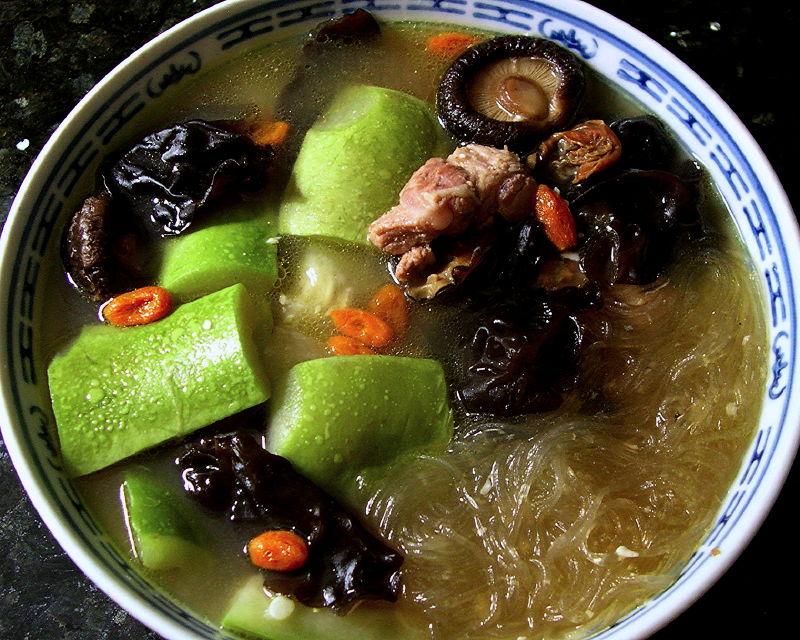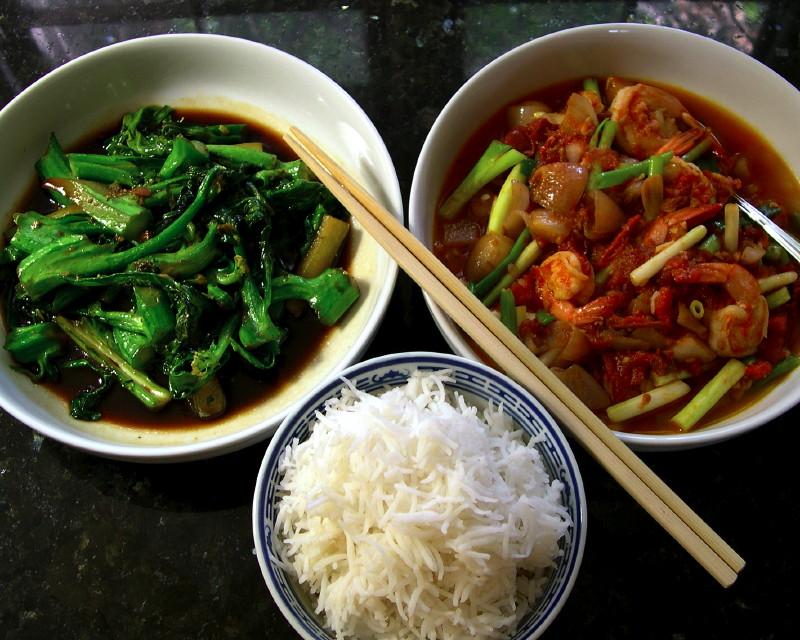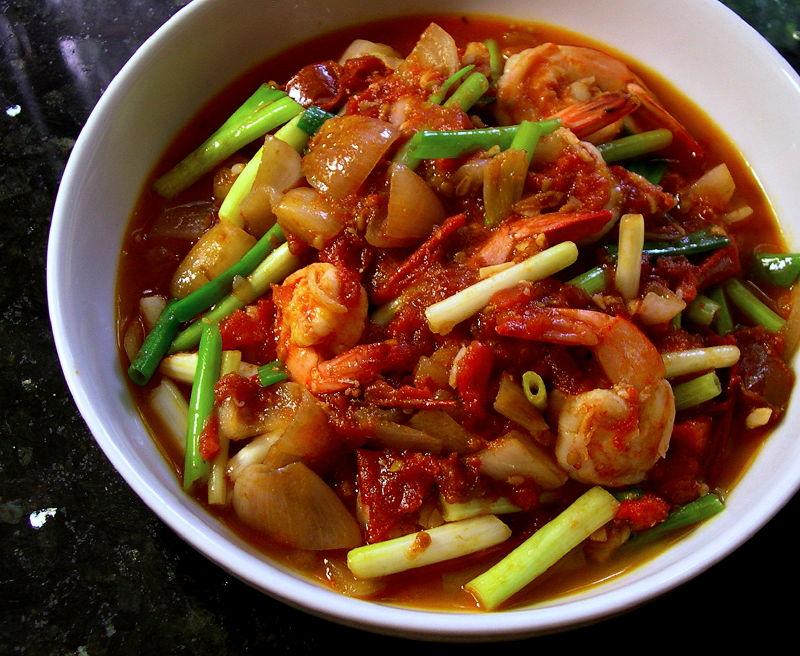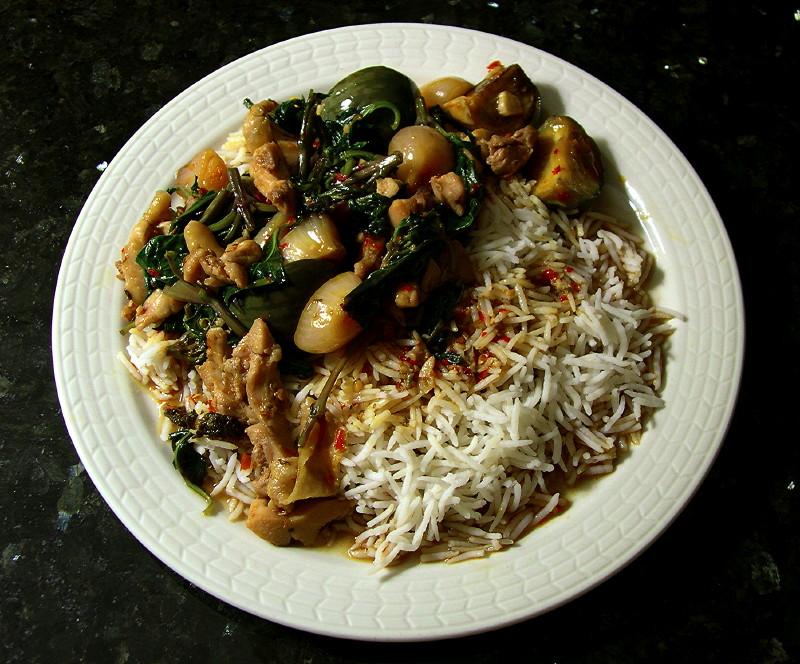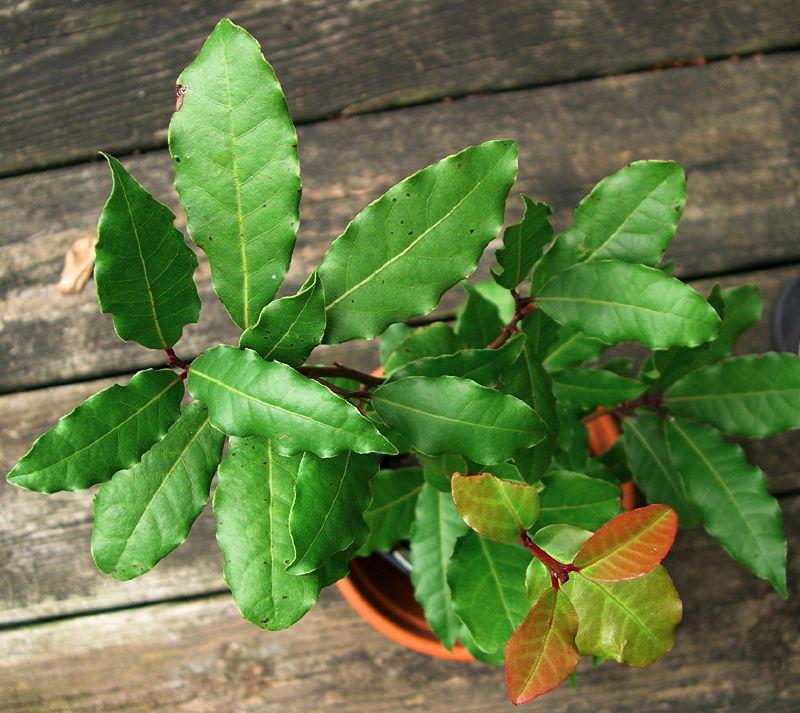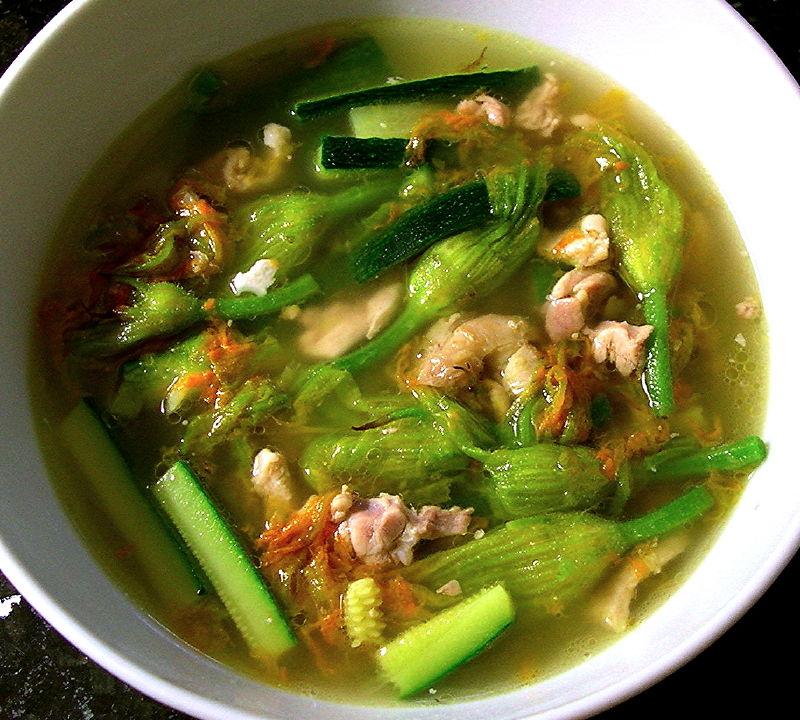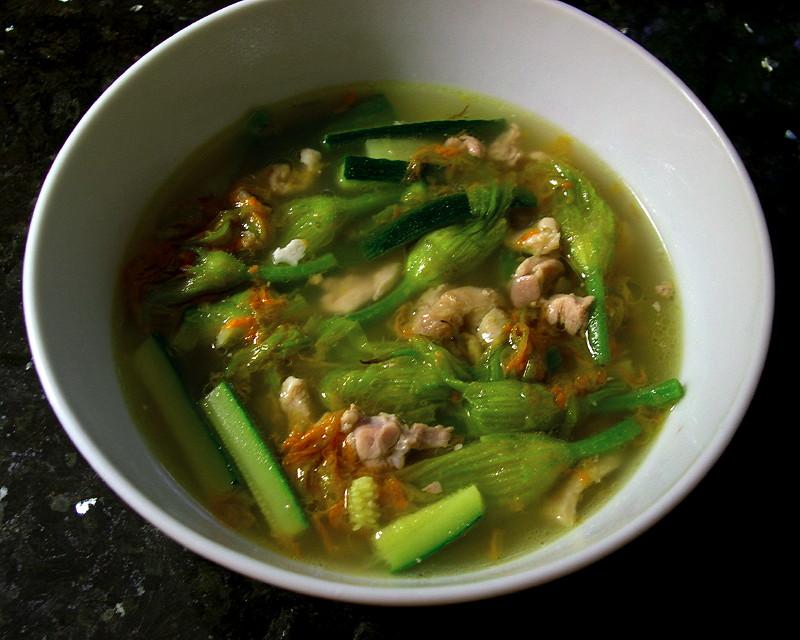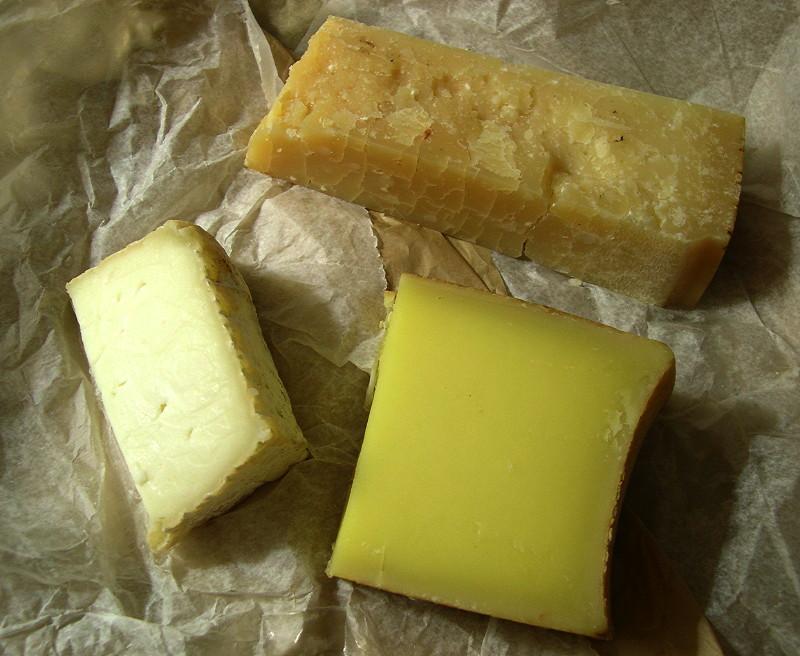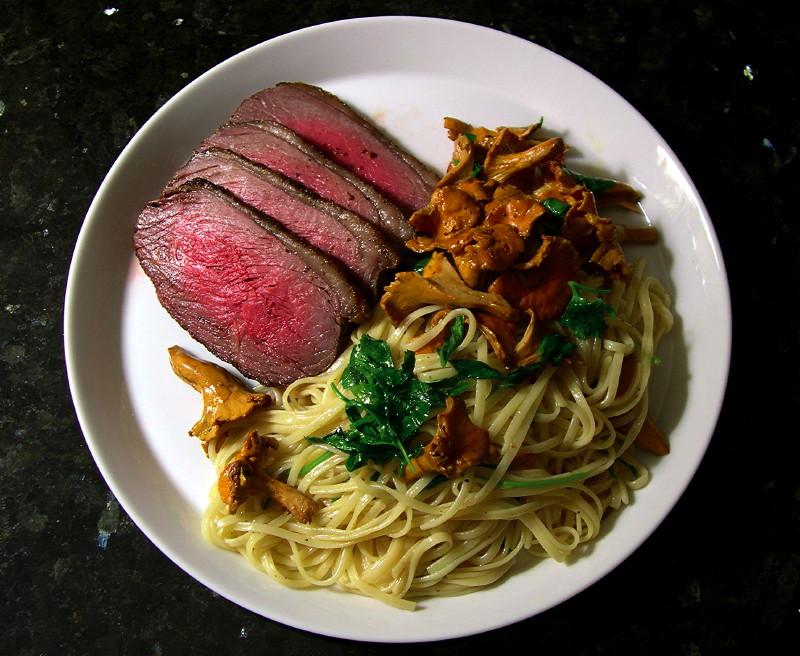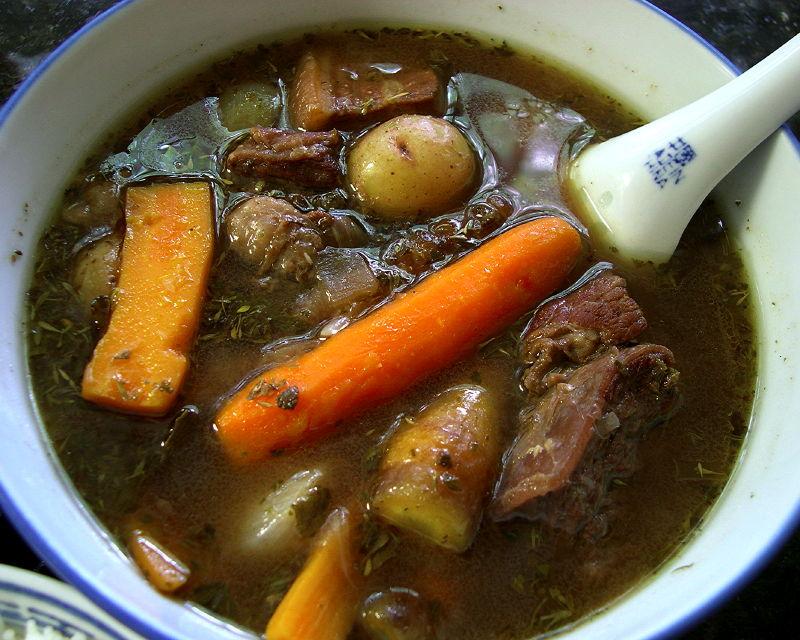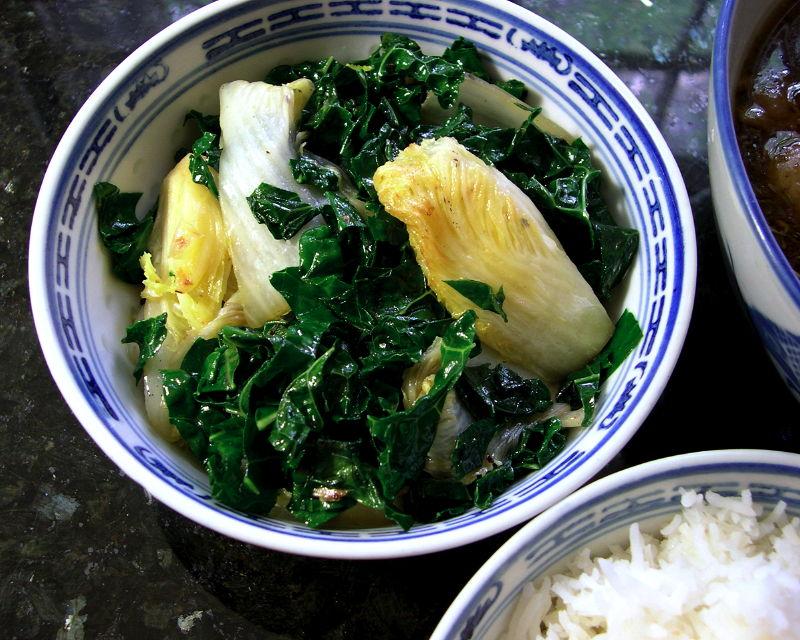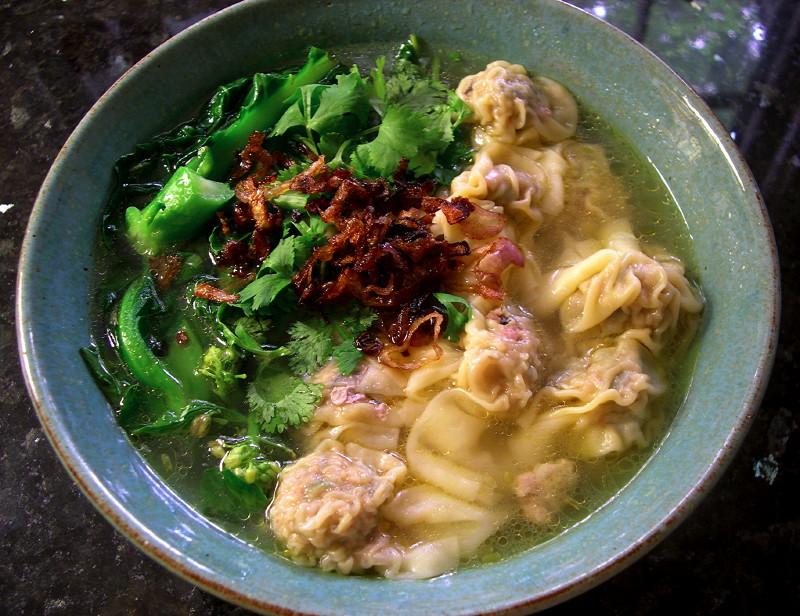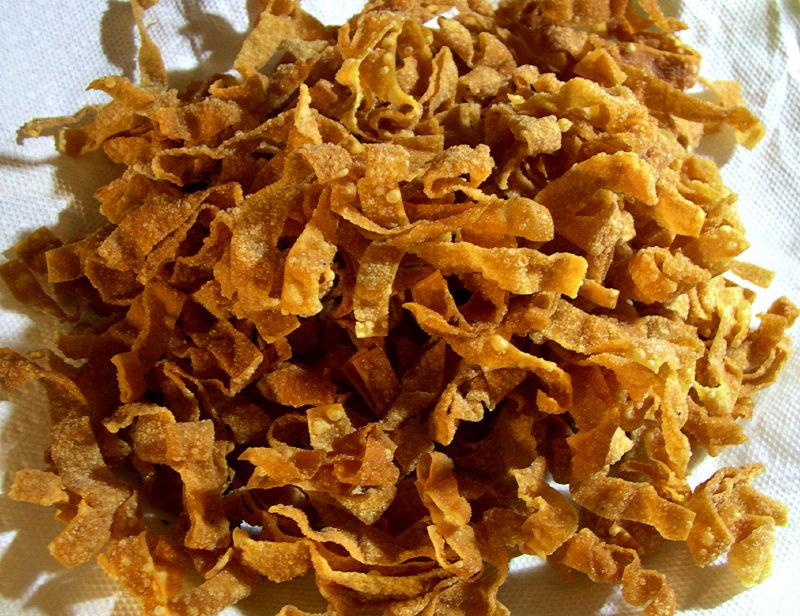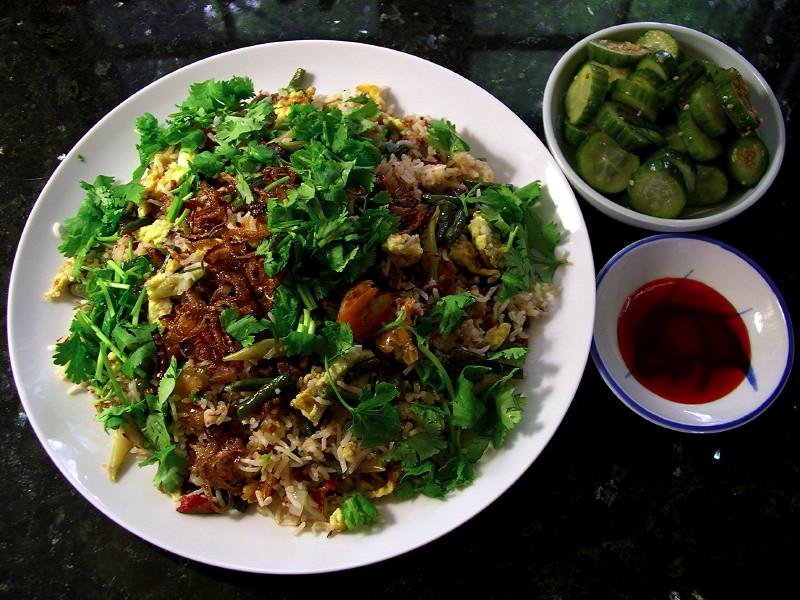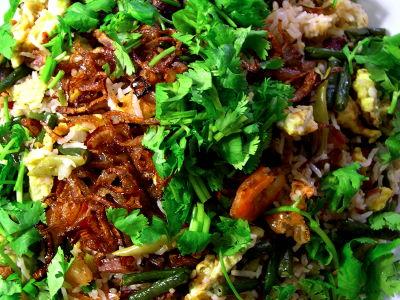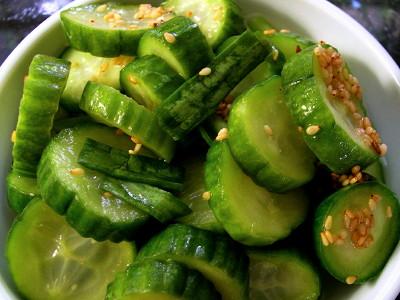-
Posts
3,810 -
Joined
-
Last visited
Content Type
Profiles
Forums
Store
Help Articles
Everything posted by huiray
-
There's nothing wrong with leftovers. ETA: In my opinion.
-
There are various references on eG to Hakka cuisine. There was a discussion about a Hakka cuisine cookbook in which you and I participated on. ;-) Otherwise, just "look it up" :-) p.s. You may have heard of Hakka Yong Tau Foo, variants of which I have also posted about here in the past? Or "homestyle" steamed meat patties in the Hakka style? p.s.2 "Hakka Fresh Curry Noodles" sounds like an odd item for a genuine Hakka food dish, at least in the traditional sense. Perhaps it being offered in a North American milieu might be a clue to its provenance. But I could be wrong.
-
A couple of recent dinners. ---------------------------------------- • Opo squash soup. With vegetable oil, garlic, short-cut pork spare ribs, water, dried oysters, dried wood-ear fungus (pre-soaked), small flower-pattern thick-cap Chinese mushrooms, (squash pieces added here), goji berries, and cellophane noodles – in that order. Salted to taste. The ribs are sautéed w/ the garlic at the beginning (vegetable oil) and a nice head of fond developed before adding water and continuing. ---------------------------------------- • White Pacific shrimp (local, farmed) in a savory tomato sauce.¶ • Trimmed kai-lan flash "stir-fried" with a sauce mix.§ • White rice. ¶ The shrimp were deheaded, deshelled, deveined and reserved. The heads, legs & shells were “pan-fried” w/ some peanut oil, chopped garlic (Music) & ginger till beginning to brown/toast slightly (salted) (heads crushed w/ the spatula) then water added to cover and simmered for a while then reserved. Chopped garlic (Music) & sliced ginger were sautéed in a hot pan (peanut oil), the reserved shrimp tossed in and cooked till they barely turned translucent and were removed and reserved. A bit more oil was added, chopped Cherokee Purple and Japanese Trifele tomatoes went in and the mix cooked on medium heat to break down the tomatoes. The reserved shrimp stock was added and the mixture reduced. Some fish sauce [Red Boat] and jozo mirin [Morita] went in, the seasoning was adjusted. Halved shallots were tossed and slightly browned in a separate pan, then added (they were definitely left crunchy) to the tomato sauce, the heat turned to high, stuff stirred around, generous (handfuls) of trimmed chopped scallions added followed by the reserved almost-cooked shrimp. Everything was tossed/stirred around briefly and the heat shut off. Served. The day's version of tôm sốt cà chua, with fresh tomatoes. § Washed & trimmed kai-lan was tossed into a screamingly hot pan (peanut oil) a few seconds after the chopped garlic went in, covered immediately and shaken/tossed for a minute or two. The cover was removed, and the mixture (the kai-lan acquires a slight browning here and there) stirred for a bit more (high heat), then quenched w/ a mixture of oyster sauce [Lee Kum Kee], Shaohsing wine [Asian Taste], “aged soy sauce” [Kimlan], sesame oil [Kimlan], ryori-shu [Morita] and ground white pepper. Stirred and banged around for a bit more (high heat) then served.
-
No, it was reflective of the notion that there were noodle dishes that were "typically" consumed for breakfast, with your citing its unavailabilty after 10 a.m. in your experience in Penang (i.e. not a tangent). But I presume the matter is cleared up now.
-
Thank you for the clarification. Yet the concept that curry laksa is not a "typically breakfast noodle dish" as I have explained and illustrated by the links I provided may yet elude you. It may have been in the area of Penang you were in and to the knowledge of your guide where it was difficult to find after 10 a.m., but it is certainly not so in other parts of SE Asia, which was your area of enquiry, where it is consumed throughout the day (including for breakfast) and into the night. It might be a bit risky to extrapolate your experiences in Penang to all of SE Asia with regards to, e.g., "curry laksa". Did you have a chance to look at the links I provided? (Here's the webpage for 328 Katong Laksa, as a further example, with their hours) I gave some examples of noodle dishes which were commonly eaten for breakfast. Perhaps that may also be a better way to describe what you are looking for, as you also explained in your OP and in the early part of your clarification. ("Typically" still implies that it is infrequent or rare to find whatever one is talking about outside of the defined parameter(s), in this case "breakfast") Of course, one need only look up dishes that interest one to see recipes for them. Just search for the names of those dishes I mentioned, for example. :-) Yes, disregarding the limitation of "breakfast" and looking into "iconic noodle dishes" would be a good idea, go for it.
-
Regarding min6 sin3 breakfast dishes: Here's one simple google search for it. Image set for KL Hokkien Mee. Image set for Singapore Hokkien Mee. Image set for Penang Hokkien Mee.
-
OK, here's a listing off the top of my head of stuff that straddles breakfast-lunch and beyond...hopefully the OP might allow that "noodle dishes just for breakfast" may not be entirely found in practice. ------------------ Note: Many of those below tend to straddle the mid/late-morning through lunch into late-afternoon periods, although they can also be had fairly early in the morning in some places. Some (like “Char Kway Teow”, wonton meen, some forms of “kari mee”, etc) are found in the early a.m. more commonly than some others. It depends on the locality. There is also no requirement that these things be eaten ONLY for breakfast or ONLY for lunch, as has been pointed out already; they are eaten whenever, although perhaps less commonly for dinner. The "Curry Laksa" you cite, for example, is eaten throughout the day, as has also been mentioned. Kari Mee of some sort is also frequently found for dinner in various places - here's just one example. (I commonly ate chee cheong fun (w/ or w/o some YTF) or mee goreng or char kway teow (amongst other things) at the still-well-known kopitiam I and my brother almost always stopped at for breakfast at 7 a.m. in the morning on our way to secondary school on our scooter) • “Wonton Meen” (wonton noodles), “wet” (in soup) or “dry” (kon lo) • Noodles w/ Chinese BBQ pork, “kai see” (shredded braised chicken meat) w/ or w/o “tung koo” (Chinese mushrooms), either “in soup” or “dry”. All types of noodles are used for the above but the common ones are egg-wheat noodles, of the “wonton” type; others include “lo shuee fun” (“rat droppings (rice) noodles” – from their shape), “hor fun” (smooth, broad(er), flat rice noodles w/ a slippery texture, etc.) “Mei fun” (skinny rice noodles) and thicker versions of rice noodles are also eaten but the “wonton-type” wheat-egg noodles tend to be more common in these dishes. • Beef ball noodles, “wet” or “dry”. Noodles tend towards the rice-based ones. • “Chee Cheong Fun” (literally, ‘pig intestine noodles’ from the supposed resemblance to those organs – but are flat sheets of rice noodles (slippery texture desired) either rolled or folded into those intestine-resembling shapes or folded then cut into wide-ish strips, drizzled with a sweet-savory brownish sauce (most common) plus chilli sauce if desired; other toppings include a wide array of stuff) (frequently eaten w/ “Yong Tau Foo” (YTF); or as part of the array of “dim sum” (and in that case frequently stuffed w/ beef or “char siu” or prawns) – so in this case since dim sum is a common breakfast meal the stuffed CCF dishes would qualify for your query as well. • “Har Mee” (especially the Penang-type, which is a spicy very savory pork + prawn-stock-based soupy noodle dish with, what else, prawns and other stuff as the garnishes) (commonly as “Hokkien Hae Mee” in Penang, “Har Mee” or “Penang Har Mee” in K.L., ditto (or “Hae Mee”) in S’pore and so on. (NOTE: The term “Hokkien Mee” can mean one of THREE very different things (at least) depending on where you are. For example, “KL Hokkien Mee” ¶¶ is QUITE unlike “Hokkien Mee” in S’pore and is frequently eaten for lunch through dinner and even into the wee hours; it is almost never found for breakfast) • Mee Siam. • even Mee Rebus. • Mee Goreng. • “Char Kway Teow” (wide-ish flat rice noodles, similar to “Hor Fun”; “mei fun” is also used – fried & tossed with certain kinds of stuff, usually including dark/thick soy sauce, and especially with cockles (YUM!!!) at the end). • All sorts of “Kari Mee” – including those you described in Penang as ‘curry mee’ which would be the lemak type (with coconut milk) (as one of the Nyonya-type variants, Penang Nyonya style); but Assam Laksa (the sour one, with tamarind & mackerel) is possibly eaten just as much or more for breakfast as well, I think. The “Kari Mee” in Kuala Lumpur would be more likely the lemak type, in the “K.L. style”. IIRC Mamak versions were also found. In Singapore “Katong Laksa” (which would be a lemak type) would be more common. See here for a discussion of various types of laksa, with concentration on Penang – K.L. – Malacca – Singapore, as mentioned in my post previously. I know I’m leaving out a whole bunch of others – but these are the ones that come off the top of my head. As for what I whip up for myself in the morning (as a carry-over from the cuisines I ate and grew up with) – look through the Breakfast threads on eG, from a few months back and backwards from there; there will be various instances of noodle dishes I posted about. p.s. Min6 sin3 (Fookchow/Fuzhou type thin white WHEAT noodles) (福州麵線) would also be commonly used in soupy noodle dishes (and more) especially in Hokkien communities, whether for breakfast or at other times. Other dialect groups would use it too although maybe not as frequently. I myself (of Cantonese-Hakka extraction) use it freely and like it very much, FWIW. ¶¶ This is a dish that I really, really miss. The ones that were done professionally and to perfection, that is. Chock-full of pork fat lardons and squid and prawns and etc etc etc, done in a huge wok over the most blazingly fierce charcoal flame. YUM!!!!!!!!! p.s.2.: I just had for breakfast/brunch some Shanghai Yangchun noodles w/ slow-simmered chicken broth and with added celery & lots of chopped scallions. Some remaining chicken skin and carrot pieces from the stock pot also went in. :-)
-
Which is why I asked the OP about it. If he had replied in the affirmative, the short answer would be that there is no such thing. ;-) And also why I mentioned that "curry laksa" is eaten throughout the day and into the night,** not just as breakfast as he understands it. ** which was also my personal experience, growing up in SE Asia.
-
I gather you are interested in noodle dishes that are eaten ONLY for breakfast and at no other time? (NB: The "Curry Laksa" in Penang you cite, a.k.a. "curry mee" as called in Penang, yes (which would be of the lemak kind, and NOT assam laksa), is certainly eaten in one or another form - and there are many variants - in many places around SE Asia throughout the day. I don't know where you ate in Penang but my recollection from an earlier time is that even in Penang "curry mee" would be available in some places into lunch and maybe even beyond as long as the vendor was not sold out, or if he/she did not need to vacate the stall to make way for another vendor towards the lunch hour. In hotel restaurants the situation might be different too? "Curry mee" can be found even at night in at least some places, like this one, even nowadays in Penang...while other places (like this one) straddle the breakfast-into-lunch period, I believe.) (See here for a discussion of "curry laksa"/"laksa" concentrating on Penang – K.L. – Malacca – Singapore)
-
Try Campari or Cherub tomatoes. From your friendly neighborhood supermarket. ETA: ...and what's wrong with good canned tomatoes, San Marzano or otherwise? Some recipes even specifically call for them. Even the Marcella Hazan simple tomato sauce as published uses such a thing, although in-season tomatoes can be used as a substitute.
-

What are your preferred brands of yellow miso and sesame oil?
huiray replied to a topic in Kitchen Consumer
cyalexa, you're welcome. I do encourage you to buy some decent shiro miso the next time you are in an oriental market, though - and compare the difference in taste between a red miso and a white miso. They'll keep in the fridge. :-) Who knows, you might develop a taste for miso soup in the morning or whenever. ;-) -
I tend to make duck stock with the wings. A recent example. An earlier example and some additional chit-chat on that one. If the wings are meaty enough they can be seasoned and grilled just like chicken wings and eaten like them; or in stir-fried/sautéed dishes just like with chicken wings - the taste would be duck-y, of course. :-) That variety of bok choy (with the light green stems, rather than white) are often called "Shanghai Bok Choy". Um, I wouldn't call them "baby" bok choy myself - but then I am used to seeing and buying much, MUCH smaller plants than those shown if they are to be called "baby bok choy". Stir-fry them. Simplest - with garlic, screaming hot pan and oil...and do not overcook - they need to retain both their color and crunch, for my taste, anyway. Another simple way to use them is to blanch in oiled hot/boiling water (I've described this elsewhere here on eG) and use them as the vegetable accompaniment in various E/SE Asian noodle dishes or similar, or just drizzle with the sauce of your choice (e,g, oyster sauce) and eat as-is. One can use them in stews and braises as the "vegetable", and they then become soft and "dissolving". Many folks like it this way but for myself I don't. They can also be used as a salad green - simply wash and chop up into bite-sized pieces and toss into your favoraite salad, green or otherwise - this would not work in every combination of ingredients, of course --- you should nibble on some of it and get an idea of the basic taste of it.
-
Have you considered incorporating more E/SE (even S) Asian vegetables into your menu? Two seed companies to consider: http://www.evergreenseeds.com/asveglis.html http://www.kitazawaseed.com/all_seeds.html There are others. I've bought from Evergreen before and have been happy with their seeds; not entirely sure (don't remember) if I've bought from Kitazawa. p.s. "The Curious Kumquat" could sort-of imply an E Asian flair, no? ;-)
-
• Thai eggplants w/ shallots, Thai basil, chicken thigh meat, generous garlic (Music) and hot vegetable oil; and a sauce derived from a mixture of chili garlic sauce [LKK], chili paste with holy basil leaves [JHC], sambal terasi [Cap Ibu], palm sugar, fish sauce [Red Boat], light soy sauce (sang chau) [Kimlan] and sesame oil [Kimlan]. The sauce mixture was added to the chicken while it was frying w/ the garlic in oil at the beginning. • White rice.
-
For the sake of comparison, here's a pic of a small plant of Laurus nobilis I got from a nursery/herb garden I trust.
-

What are your preferred brands of yellow miso and sesame oil?
huiray replied to a topic in Kitchen Consumer
I used Kadoya (which is Japanese) sesame oil for many years but eventually just found it too overpowering - and, as FeChef says, somewhat "burnt" in taste and smell. (In any case, the commonly available one here in the USA is from toasted sesame seeds, anyway) Clean, "untoasted", if you will, sesame oil smells pleasant and can even be used (sparingly) as a cooking or stir-frying oil, not as an accent where more than a few drops results in a *very* pronounced taste and smell. Nowadays I tend to use Dragonfly brand (Taiwanese) or Kimlan brand (also Taiwanese; this has a "stronger" taste/smell than Dragonfly). I would never dream of using Kadoya sesame oil as a cooking oil. Just me. Note also that there is "black sesame oil" and "ordinary sesame oil". ;-) Regarding miso - I'm not sure what you mean by "yellow miso". Do you mean miso paste which is the usual color, a sort of off-yellow (ranging from light yellow-ish) to deep yellow-brown (and then on to reddish brown, which is probably not what you are thinking of)? Here's an article on miso that might be useful. I use various types of miso and from various producers. The one I use more is probably shiromiso ("white" miso, which is really a sort of pale yellow-brown) (see the article) and usually mutenka shiromiso at that (again, see the article). Still, what I have in my fridge right now are: Shirakiku (producer/brand) akamiso (red miso); Miyasaka-Jozo (company) mutenka shiromiso; and Yamabuki (company) "organic" miso, which resembles a sort-of awasemiso in my view. I have used the Maruman brands of mutenka shiromiso and awasemiso frequently in the past and will continue to do so, even though they are not in my fridge at the moment. -
I won't say I can always tell the difference between using bay leaves or not in any dish I cook - but in my conscious recollection there is a difference. As others have said, more than just one or two leaves are used. Yes, the age of the dried leaves would matter. I've actually fished out several leaves from some stews I was making in the past (after adding multiple leaves) because as it was cooking along the aroma and taste was such that I thought there was a danger of it becoming a tad overpowering in the finished dish. I find it hard to describe the "taste"/"smell" combination, but one way to think about it (for me) is that a certain "body" and tint gets added to the palette of smells and tastes. For myself, I think there is a difference between fresh leaves and dried leaves, not that fresh is necessarily better than dried - the fresh adds a "greener" tint...and maybe a more resinous touch as well; but I have not used fresh bay leaves that often. BTW, I assume we are talking about Laurus nobilis leaves, whether fresh or dried. California bay, Umbellularia californica, might be used as "fresh bay leaves" by some (or is "more accessible" in the US?) - but it is a different plant and the taste and smell is NOT the same or interchangeable. There's an older eG thread that also talks about the two types.
-
Looks like A.O. Scott was not a fan. http://www.nytimes.com/2014/08/08/movies/in-the-hundred-foot-journey-kitchen-wars-break-out.html -------- I've always had a soft spot for Ratatouille.
-
BRFM: Sun Gold tomatoes, baby Japanese & Chinese long-type aubergines, Bulgarian Carrot peppers, Green Zebra tomatoes, White Russian kale, brown eggs, Pane Francese. Goose the Market: Local shrimp (Crawfordsville), Tarentaise cheese [Farms for City Kids], Parmigiano Reggiano cheese, Victory Hill Reserve cheese, Old Kentucky Tomme cheese. Asia Mart: Scallions, burdock root, angled loofah, fresh lychees, whole black peppercorns, frozen stewing chicken, short-cut pork spare ribs, pork belly strips, Da Guan (Taiwanese brand) Jasmine Green Tea (大觀 清香茉莉綠茶).
-
-
A leisurely dinner. Earlier on: • Pumpkin blossom/squash blossom soup; w/ sautéed garlic (Music), sliced dark meat chicken, chicken stock, dash of fish sauce [Red Boat], green zucchini batons. Simmered till done. (blossoms went in last) • Interlude – Parmigiano Reggiano (top), Old Kentucky Tomme (left) and “Farms for City Kids” (Spring Brook Farm) Tarentaise cheeses. Pic of remaining blocks after I had sequentially chopped off pieces and chomped them down. :-) Later on: • Top sirloin cap, seasoned simply w/ salt & pepper. Oven – pan seared (vegetable oil) – oven. Rested about 20 min. • Chanterelles tossed in the pan fond/residues/drippings from the searing of the beef, with additional EV olive oil plus Redmond salt + sea salt. Parsley. Just-cooked linguine added, tossed/stirred around in the pan, plus some of the pasta water.
-
Lunch yesterday: • Beef short ribs (bone-in) & pork belly stew – w/ sautéed garlic, red & yellow onions; salted & simmered ~ 1½ hours; then, sequentially – baby new Yukon Gold & Red Gold potatoes, red & orange carrots, whole shallots, dried oregano & thyme; then a good dash of Maggi sauce (German version) plus some Takara hon-mirin. • Napa cabbage & deribbed Tuscan kale stir-fried w/ garlic. • White rice.
-
Pork wontons w/ kai lan in chicken broth. Garnished w/ fresh deep-fried shallots & coriander leaves. The filling was minced pork with andouille sausage mince (1:1), mixed w/ sesame oil, chopped scallions, chopped garlic, finely sliced wood-ear fungus (rehydrated & trimmed dried stuff), ground white pepper, sang chau [Kimlan], a few dashes of fish sauce [Red Boat], crumbled half of a palm sugar nugget. The chicken broth was chicken stock plus chicken fat, rendered in the stock, chopped garlic, simmered for a bit, seasoning adjusted and diluted a bit. I also made a batch of munchies and chomped on them as well. :-)
-
A riff on Yeung Chow fried rice. Three farm eggs were beaten w/ some water, oil, hon-dashi granules and ground white pepper; then fried in plenty of very hot peanut oil to give a simple bubbly lightly browned omelette. This was set aside, allowed to cool a bit then cut into ribbons and reserved. Duck fat was added to the pan, chopped garlic was tossed/stirred around followed by pre-soaked large dried prawns (har mai), then Chinese BBQ pork (char siu) chopped into fine dice. Continued high heat. Chinese long beans chopped into ~ 2 inch length and Dragon Tongue beans cut diagonally into ~ 1 inch pieces went in next. Tossed around. White rice followed and everything mixed well; high heat. Seasoning was adjusted. Chopped scallions (lots) and the reserved egg ribbons went in and mixed in. The heat was shut off and the pan covered for a couple of minutes. Served w/ chopped coriander leaves and freshly deep-fried sliced shallots. Accompanied by pickled scallions & Japanese cucumbers; plus Lingham's Hot Sauce.
-
You have lots more zucchini coming, right? Perhaps it might be an idea to surprise those folks you have in mind with "spontaneous early presents"? Then bake more... :-)


